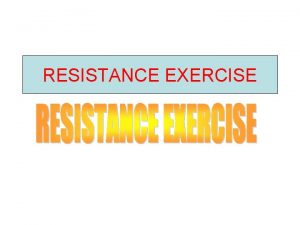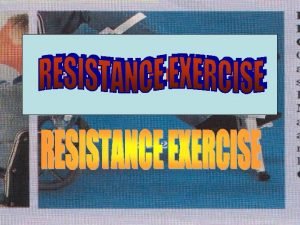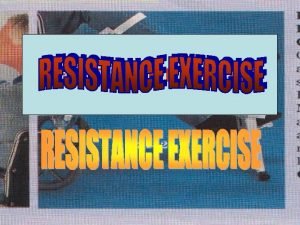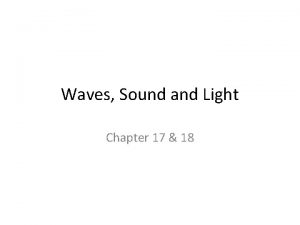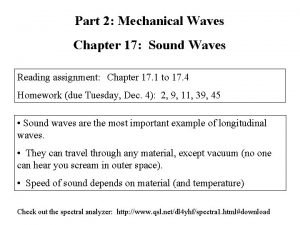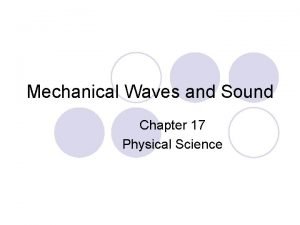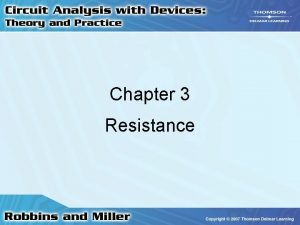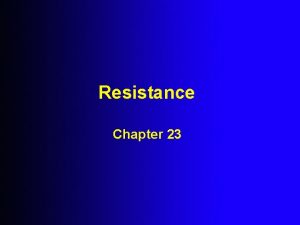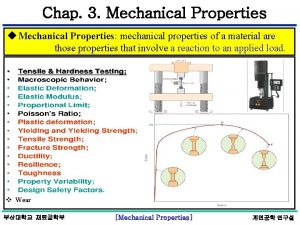Chapter 4 Resistance 4 1 Resistance in Mechanical









- Slides: 9

Chapter 4 - Resistance 4. 1 Resistance in Mechanical Systems

Friction

Friction • • mg = weight Fn = normal force Ff = frictional force Fa = applied force

Friction formula • Ff = m. Fn m = coefficient of friction The normal force is the reaction force of the surface to the weight of the object. It is perpendicular or “normal” to the surface. On a flat and level surface, the normal force is equal to the weight of the object.

Friction may be static (starting) or kinetic (moving). Thus there is a coefficient of static friction ( ms) and a coefficient of kinetic friction ( mk) Kinetic friction is usually less than static friction If an object is pulled at a constant speed across a flat, level surface, the frictional force will equal the force of the pull (the applied force) and the normal force will equal the weight of the object. Thus Ff = m. Fn or Fa = mmg Thus m = Fa / mg i. e. The coefficient of friction is the ratio of how hard you have to push or pull to the weight of the object.

Rolling Friction & Lubricants • Rolling friction is much less than sliding friction between surfaces. • Surfaces don’t slide and grind past one another near as much as when they slide. • Lubricants reduce friction by separating surfaces. Surfaces glide on a fluid layer of lubricant and thus reduce friction.

Summary • Newton’s second law of motion states the relationship among the net force acting on an object, the mass of the object, and its acceleration: F = ma. • An object’s weight is the force exerted on the object by gravity. Fg = mg. Near the surface of the earth, the gravitational acceleration is g = 9. 80 m/s 2 or 32. 2 ft/s 2.

Summary – cont. • Friction causes resistance in mechanical systems. • To start an object moving, you must overcome the force of the static friction. To keep an object moving at a constant speed, you must overcome the force of kinetic friction. • According to the linear model, the force of friction between two surfaces is directly proportional to the normal force pushing the surfaces together.

More Summary • Lubrication and rollers reduce friction. Lubricants separate the two sliding surfaces with a layer of fluid.
 Actual mechanical advantage vs ideal mechanical advantage
Actual mechanical advantage vs ideal mechanical advantage Mechanical resisted exercise
Mechanical resisted exercise Isokinetic exercise
Isokinetic exercise Mechanical resistance exercise
Mechanical resistance exercise Active resisted exercise
Active resisted exercise Constant rate filtration example
Constant rate filtration example Ignoring friction air resistance and electrical resistance
Ignoring friction air resistance and electrical resistance Different types of mechanical waves
Different types of mechanical waves Chapter 17 mechanical waves and sound worksheet answers
Chapter 17 mechanical waves and sound worksheet answers Chapter 17 physical science
Chapter 17 physical science

